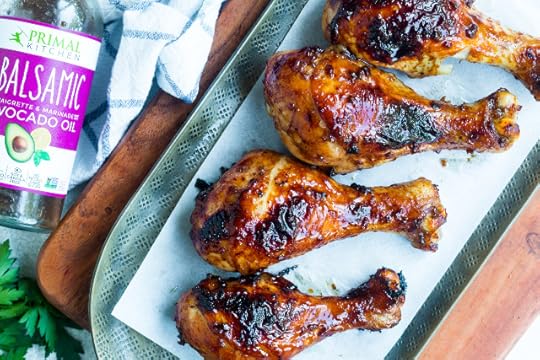Mark Sisson's Blog, page 96
September 5, 2019
Menopause, Part II: Psychological Well-being
 In our previous menopause post, I mused on some perspectives of menopause that are positive and affirming for women. However, I don’t want to downplay the fact that many women experience menopause as a difficult, frustrating, and even disempowering time. (Again, I am using “menopause” to include the perimenopausal period.)
In our previous menopause post, I mused on some perspectives of menopause that are positive and affirming for women. However, I don’t want to downplay the fact that many women experience menopause as a difficult, frustrating, and even disempowering time. (Again, I am using “menopause” to include the perimenopausal period.)
As I mentioned in the last post, some researchers estimate as many as 75% of women experience some type of “menopausal distress,” and we don’t talk about it enough. Today I want to examine some of the psychological and emotional facets of menopause. In the final post of this series, we’ll look at self-care techniques and non-hormonal therapies that seem to be the most beneficial.
What Research Suggests About Emotional Well-being During Menopause
Obviously menopause is a major life transition—significant biological changes wrapped up in a complex web of personal and sociocultural beliefs, fears, stressors, and stories. It can be a time of great apprehension, confusion, even despair for some women. Others pass right through menopause with hardly a bat of an eye. Still, others welcome and embrace it.
It’s extremely understandable why this would be a challenging time for women. Menopause can be a perfect storm of physical discomfort and cognitive symptoms (brain fog, forgetfulness), sleep deprivation (thanks to those night sweats and hot flashes), and emotional fluctuations. Besides how they feel, these symptoms can affect women’s personal relationships, ability to perform their jobs, and sense of self-worth and self-confidence.
For many women, menopause also coincides with the dual stressors of aging parents and raising teenagers or having a newly empty nest. Plus, menopause is an unmistakable marker of aging, which can evoke complicated feelings as well.
Overall, stress, depression, and anxiety seem to be fairly common during menopause. Recent Guidelines for the Evaluation and Treatment of Perimenopausal Depression commissioned by the Board of Trustees for The North American Menopause Society (NAMS) and the Women and Mood Disorders Task Force of the National Network of Depression Centers describe perimenopause as a “window of vulnerability for the development of both depressive symptoms and a diagnosis of major depressive disorder.”
It’s difficult to know exactly how many women are affected. Studies of depression and anxiety are usually conducted on women whose symptoms are severe enough to seek help from their doctors. Researchers estimate that up to 40% of women will experience depression at some point during menopause; it’s unclear how prevalent anxiety might be.
It’s easy to assume that some women become depressed and anxious during menopause because their symptoms are so gnarly. To some degree, that narrative is probably true. Studies do find that women who experience more severe symptoms such as frequent hot flashes also exhibit more depression and anxiety. This makes sense—being physically uncomfortable and unable to get a good night’s sleep can certainly set the stage for poor psychological outcomes.
On the other hand, it’s likely that for some women, depression and anxiety exacerbate the physical and emotional symptoms. That is, depression and anxiety might be a lens that magnifies how bad menopausal symptoms feel, so these women report having more severe symptoms.
In any case, there’s more to it than “menopause is rough, and it makes women depressed and anxious.” One of the biggest risk factors for depression and anxiety during menopause is prior episodes of depression and anxiety. Women who are also experiencing other life stressors, including relationship stress and socioeconomic stress, are also more likely to become depressed.
In other words, women who are otherwise vulnerable are more likely to experience poor psychological well-being when hit with the additional stress of the menopausal transition.
Along these lines, one study compared depressed and non-depressed perimenopausal women on a variety of quality of life measures, including life enjoyment and satisfaction; ability to function in work, social situations, and relationships; and perceived social support. The researchers also assessed the severity of the women’s hot flashes. The depressed women scored lower than the non-depressed women on all quality of life measures. Severity of hot flashes had no effect for either group.
The authors concluded that future studies “need to distinguish between those women with [perimenstrual depression] and non-depressed women to avoid attribution of decreased [quality of life] to the menopause transition alone.” In other words, don’t blame the hot flashes for what the depression wrought.
This is an important point: We assume that menopause interferes with women’s well-being and quality of life because the symptoms stink (and they definitely do for a lot of women). However, the degree to which menopause actually impacts a woman’s quality of life might depend, at least in part, on whether she experiences concurrent depression or anxiety.
This is not to say that if you’re having a hard time dealing with your symptoms, you’re definitely also depressed. Rather, consider whether depression and anxiety are contributing so that you can address them directly.
Likewise, don’t assume that depression and anxiety will resolve on their own once the physical symptoms subside. Treating the physical symptoms is important, but for many women it might not be enough.
What We Need to Be Saying (To Each Other) About It
At the risk of stating the obvious, a lot of distress is surely rooted in the fact that women don’t feel like they can talk openly and honestly about their experience of menopause, perhaps especially the mental and emotional aspects.
In Becoming a Menopause Goddess, author Lynette Sheppard asserts that all of her friends experienced sadness, if not full-blown depression, during menopause. All of them. More than anything, she says, they needed to hear that it was normal, that there was nothing inherently wrong with them.
Instead, the stigma surrounding mental health struggles and the taboo nature of talking about menopause keep many women suffering in silence. Of course, it’s not like we talk freely about the physical symptoms, either. Sure, we can kvetch about hot flashes with our friends. How many women feel free to discuss brain fog and sleep deprivation with their bosses, even if they have very real consequences in the workplace?
I understand that “just talk about it” is neither easy nor sufficient—I’m not trying to be trite. It’s not like posting your hot flashes on social media will do anything to stop them. Nor can I promise that your boss will be super understanding if you march into his/her office and announce that you can’t finish your project on time because you simply can’t focus.
However, let’s think about what we can do to open up the channels of communication with our friends and partners at least to start. It’s no secret that social support can be an important factor in warding off depression during times of stress.
We Need A Multi-Pronged Approach
Besides talking about it, what else can women do to cope with physical, psychological, and emotional symptoms during menopause? Hormone therapy (HT) is the predominant approach that doctors prescribe (of course). I won’t cover the pros and cons, nor the safety questions, since Mark did so recently. Definitely check out that post if you are considering HT for yourself. Mark’s wife, Carrie, has also written about her experience with menopause symptoms in previous posts (1, 2).
I will point out that most symptoms aren’t clearly caused by the hormonal changes that characterize menopause. Vasomotor symptoms (hot flashes, night sweats) are the most strongly linked to hormonal changes, but other symptoms seem to be more related to psychosocial factors. Even vasomotor symptoms don’t map perfectly onto hormone fluctuations. Women with the biggest drops in estrogen won’t necessarily experience the most hot flushes, for example.
That doesn’t mean you shouldn’t try HT if you and your doctor decide it’s right for you. It clearly has benefits, including that it seems to help some women with depressive symptoms and anxiety. It’s not clear whether this is because it alleviates physical symptoms or because the depression and anxiety are directly caused, at least for some women, by hormone fluctuations.
However, it’s a mistake to assume that if we “fix” the hormones, or get rid of the hot flashes for example, the rest will fall into place.
Thinking about the quality of life study I mentioned above, it’s important not to get wrapped up in the story that hormones plummet, hot flashes and night sweats ensue, and then women become grouchy and depressed as a result.
In reality, the hormone stuff, the physical stuff, the emotional stuff, the sleep stuff, the relationship stuff, and more stuff all get thrown into the mix, each potentially feeding into and off of the others.
What we need is a multi-pronged approach. (I feel like there’s a pun here about protecting the flanks—I’ll keep working on that one.) Besides treating underlying hormone fluctuations with HT or herbal remedies, women and their doctors should also separately address specific physical and cognitive symptoms, general health, and psychological and emotional well-being.
The aforementioned Guidelines for the Evaluation and Treatment of Perimenopausal Depression, for example, offer this recommendation, “Proven therapeutic options for depression (antidepressants, cognitive behavioral therapy and other psychotherapies) should remain as front-line antidepressive treatments for major depressive episodes during perimenopause.” In other words, take care of the depression on its own.
For women who want to be holistic in their approach, and who perhaps want to avoid or minimize HT, there are a number of non-hormonal, complementary practices that have been shown to help. In the next post in this series, I’ll highlight some of the ones that show the most promise for relieving menopausal symptoms specifically, as well as for stress reduction, emotion regulation, and coping more generally.
Now I want to hear from you. Do you feel free to talk about your experience of menopause with the people in your life? Have you had positive or negative experiences when you have talked about it in the past?
Resources:
Deeks AA. Psychological aspects of menopause management. Best Pract Res Clin Endocrinol Metab. 2003 Mar;17(1):17-31.
Schneider M, Brotherton P. Physiological, psychological and situational stresses in depression during the climacteric. Maturitas. 1979 Feb;1(3):153-8.
Zhou B, Sun X, Zhang M, Deng Y, Hu J. The symptomatology of climacteric syndrome: whether associated with the physical factors or psychological disorder in perimenopausal/postmenopausal patients with anxiety-depression disorder. Arch Gynecol Obstet. 2012;285(5):1345–1352.
The post Menopause, Part II: Psychological Well-being appeared first on Mark's Daily Apple.



September 4, 2019
Life In the Sanitized Bubble (Or Why Probiotics Are So Important)
 For the vast majority of human history (and prehistory), men, women, and children had near-constant contact with the natural world around them. They were walking on the ground. They were playing in the dirt. They were digging for roots and grubs. They were eating with their hands. They were field dressing animals and wiping their hands on the grass. Nothing was sterilized; the tools to sterilize the environment didn’t exist. You could boil water, but that was about it. Bacteria were everywhere, and humans were constantly ingesting it. Even as babies, preindustrial infants nursed for almost four years, so they were getting a steady source of breastmilk-based probiotic bacteria for a good portion of their early lives.
For the vast majority of human history (and prehistory), men, women, and children had near-constant contact with the natural world around them. They were walking on the ground. They were playing in the dirt. They were digging for roots and grubs. They were eating with their hands. They were field dressing animals and wiping their hands on the grass. Nothing was sterilized; the tools to sterilize the environment didn’t exist. You could boil water, but that was about it. Bacteria were everywhere, and humans were constantly ingesting it. Even as babies, preindustrial infants nursed for almost four years, so they were getting a steady source of breastmilk-based probiotic bacteria for a good portion of their early lives.
The Agricultural Age: Farms and Fermented Foods
After agriculture and animal husbandry hit the scene, human diets changed, but their environmental exposures didn’t so much. Every day they interacted closely with the soil and/or animals (and their respective bacteria). And they also continued ingesting probiotic bacteria on a regular basis through the use of fermented food—for at least the last 10,000 years. Honey into mead, grains into beer, fruit into wine, alcohol into vinegar.
We know that fermented dairy has been an integral part of any traditional dairy-eating culture because fermentation is the natural result of having milk around without refrigeration. You take raw milk and leave it out for a couple days at room temperature, and it will begin to separate and ferment. Introduce an animal stomach and you can make cheese. Introduce specific strains of bacteria, and you can make yogurt or kefir. But the point is that dairy fermentation—and, thus, the consumption of dairy-based probiotics—was unavoidable in pre-industrial dairy-eating societies.
In areas without (and some with) dairy consumption, they fermented plants. Kimchi, sauerkraut, pickles, chutneys, soy sauce, miso, and natto are just several examples among hundreds.
Modern Diets, Modern Environments
Here’s my point to all this: probiotics in one form or another have been a constant input in the human experience… until today.
Today? We live sterilized lives.
We wipe everything down with anti-microbial agents.
We wash all our plates and eating utensils with ultra-hot water and powerful soaps.
We wear shoes.
We don’t touch (or see) dirt for days, weeks at a time.
We stay indoors most of the day.
We pasteurize our dairy. We render shelf-stable (and thus inert) our sauerkraut and pickles.
We sterilize our water.
We take antibiotics.
We eat processed, refined food that’s been treated with preservatives and anti-microbial additives designed to remove all traces of bacteria.
We employ tens of thousands of scientists, bureaucrats, and agents whose primary role is to ensure our food supply is as sterile as possible.
I get all that. There are good reasons for doing all these things, and on the balance I’d of course rather have clean water, clean food, and antibiotics than not, but there are also drawbacks and unintended consequences. We live in a sterile world, and our guts weren’t built for a sterile world. They’re meant to house a diverse array of bacteria.
What Are the Consequences Of Living a Sterile Life?
Hippocrates, the father of medicine, said that “all diseases originate in the gut.” The most obvious example, digestive issues, are some of the most common in the post-industrial world. Constipation, diarrhea, bloating, and general digestive distress affect tens of millions. Food intolerances and allergies, which also have a link to gut health, are rising.
Even conditions that aren’t intuitively linked to gut health, like autism or hay fever or even heart disease, may actually have a connection with the state of our guts or digestion.
At least since Biblical times (and probably earlier), humans have identified a connection between the gut and our emotions. “I’ve got a gut feeling…” or “I feel it in my gut.” Though it’s usually portrayed as “merely metaphor,” this connection isn’t spurious and can feel quite real. Remember when you held hands with that pretty girl or handsome guy for the first time? You felt those butterflies in your gut. Or how you had to rush to the bathroom before giving that big talk in front of your college class? You felt the nervousness and anxiety in your gut.
Evidence is accumulating that our gut bacteria can manufacture and synthesize neurotransmitters like serotonin and GABA, and even sex hormones like testosterone. We’ve even identified a legitimate physiological pathway running from the gut to the brain and back again. Couple that with the fact that gut health seems to play a role in depression, anxiety, and other related conditions, and it starts looking like our lack of exposure to probiotic bacteria could be triggering (or at least exacerbating) the rise in mental health issues.
Supporting Our Guts In the Age of Sterility
The foundation of gut health has to be diet: 1) Eating fermented foods to provide probiotic bacteria and 2) eating plant and animal foods that provide prebiotic substrate to feed and nourish those bacteria. That’s been the way of humans for tens of thousands of years—from ingesting soil-based and animal-based bacteria on the food we ate as foragers to directly producing and consuming fermented food—and it should remain the primary mode of probiotic procurement.
But there’s also a place for probiotic supplementation. Food alone probably can’t atone for the sterile existence we’ve built for ourselves. Food alone can’t counteract the several years of breastfeeding you didn’t get, the dirt you didn’t play with, the antelope colons you didn’t handle with bare hands, the untreated water you didn’t drink. You may get it now, but what about ten years ago? What about when you were a kid?
Evolutionarily novel circumstances often require evolutionarily novel responses to restore balance.
And probiotics aren’t even that “novel.” We’re clearly designed to consume probiotics in the food we eat, and probiotic supplements utilize the same ingestion pathway, especially if you consume them with food. The dosages may sound high. Primal Probiotics, the one I make (and take), contains 5 billion colony forming units (cfu, a measure of bacteria that are able to survive digestion and establish colonies in the gut) of good bacteria per dose—but that’s right in line with (or even well under) the dose of probiotics found in common fermented foods.
A single milliliter of kefir can have up to 10 billion cfu.
A cup of yogurt can contain up to 500 billion cfu.
A tablespoon of sauerkraut juice can contain 1.5 trillion cfu. Kimchi is probably quite similar.
A single gram of soil can contain almost 10 trillion cfu. A gram of soil is easy to consume if you’re eating foods (and drink water) directly from the earth.
Now, Primal Probiotics isn’t the only option. It may not even be the best option if you have specific conditions that other strains are particularly adept at addressing. (I’ll cover this in a future post.) But the way I designed Primal Probiotics was to be a good general, all-purpose probiotic with particular applications for Primal, keto, and other ancestrally-minded people living their modern lives.
For instance, one of my favorite strains I’ve included is Bacillus subtilis, the very same bacterial strain that’s found in natto, the traditional Japanese fermented soybean. B. subtilis addresses many of the issues we face in the modern world. It helps break down phytase in the gut and turn it into inositol, an important nutrient for brain and mood and stress. It helps convert vitamin K1 (from plants) into vitamin K2 (the more potent animal form of the vitamin). It can even hydrolyze wheat and dairy proteins to make them less allergenic.
There’s also Bacillus clausii, an integral modulator of the innate immune system (PDF)—the part of the immune system that fights off pathogens, toxins, and other invading offenders. Innate immunity is ancient immunity; it’s the same system employed by lower organisms like animals, plants, fungi, and bacteria. It’s the foundation of what we know as the immune response. What’s funny is that B. clausii has such a powerful effect on our innate immunity that one could argue B. clausii is an innate aspect of our gut community.
I’ve also included a small amount of prebiotic substrates in the latest iteration. I use raw potato starch (for resistant starch) and a blend of fructooligosaccharides and galactooligosaccharides. The prebiotic doses are low enough that they shouldn’t exacerbate any gut problems or FODMAPs intolerances and high enough to provide enough food for the probiotics to flourish.
Again, you don’t have to take Primal Probiotics. It’s my opinion that they provide the perfect combination of strains for most people’s needs, especially when combined with regular intakes of fermented veggies like sauerkraut and fermented dairy like yogurt, cheese, and kefir, but the actual strains themselves aren’t proprietary. You can find them elsewhere if you want to get individual probiotics. Hell, you may not even need a probiotic supplement. Depending on your personal health background, the level of sterility in your life history and current life (if you grew up on a farm drinking raw milk, for example), and the amount of fermented foods you currently consume, you may not need supplemental assistance.
But it’s sure nice to have around.
Anyway, that’s it for today.
How do you get your probiotics? Do you find them necessary for optimum health? What kind of benefits have you experienced from taking probiotics, either via food or supplementation?
Thanks for reading, everyone. Take care.
The post Life In the Sanitized Bubble (Or Why Probiotics Are So Important) appeared first on Mark's Daily Apple.



September 3, 2019
Dear Mark: Health Effects of Neutering, Grain-Free Dog Diets, Ideal Dog Diet
 For today’s edition of Dear Mark, I’m answering three questions from last week’s Weekly Link Love comment section. They’re all about dogs. First, are their negative health effects of neutering or spaying? Second, do grain-free dog diets give dogs dilated cardiomyopathy, a kind of heart disease? What’s the alternative? And third, what is in my opinion the ideal dog diet—and should everyone be feeding it to their dogs?
For today’s edition of Dear Mark, I’m answering three questions from last week’s Weekly Link Love comment section. They’re all about dogs. First, are their negative health effects of neutering or spaying? Second, do grain-free dog diets give dogs dilated cardiomyopathy, a kind of heart disease? What’s the alternative? And third, what is in my opinion the ideal dog diet—and should everyone be feeding it to their dogs?
Let’s go:
Mark, wouldn’t neutering dogs cause some long term negative health effects in them, as I assume it would in humans?
As you might expect, removing a dog’s testicles or ovaries—major reproductive and endocrine organs—can have negative effects. That’s just common sense, and we have observational studies paired with physiological mechanisms to make the case. The best-studied complications are cancer and joint disorders.
Among German shepherds, 7% of intact males were diagnosed with a joint disorder. 21% of males who’d been neutered before age 1 had a joint disorder. 5% of intact females were diagnosed; 16% of spayed females were diagnosed.
Among a group of 700+ golden retrievers, 5% of intact males had hip dysplasia, while 10% of early neutered males had it. No intact dogs had ever had any cranial cruciate ligament (an important ligament in the dog knee) tears, while 5% of early neutered males and 8% of early spayed females had torn one. 10% of early neutered males had a diagnosis of lymphoma, three times the rate of intact males. In females, late spaying (after 1 year of age) seems to have increased the rate of certain cancers, including hemangiosarcoma (a blood vessel cancer) and mast cell (breast) tumors.
Similar results with regards to joint disorders have also been found in labrador retrievers.
Both spaying females and neutering males appears to increase the risk of heart cancer, a fairly common cancer in dogs. Spayed females have the greatest risk of all.
Early spayed or neutered Rottweilers have an increased risk of bone cancer, another common disease to the breed.
Neutered/spayed dogs have a higher risk of hypothyroidism.
Intact dogs have higher metabolisms and lower appetites. The opposite is true for neutered dogs, which could explain the rise in pet obesity.
If you’re going to neuter a dog, I’d recommend waiting as long as you can. At the least 1 year, and ideally longer until sexual development completes. That allows the dog’s joints, muscles, and skeletal tissue to reach its full potential.
Also realize that the sex hormones aren’t only about sex or physical/structural development. They also help determine mental and psychological development.
Interesting SwS post about dogs. I would caution people to make assumptions canines need the same diet as people. Recently, many folks are discovering that dogs on a grain free diet seem to have a higher likelihood of developing hart issues. My house is kind of an n=14 experiment and I would guess that our dogs get on the active side in terms of exercise. We also have three dozen sheep, two dozen ducks, and a bunch of chickens. My wife is a dog trainer so in addition to our dogs she works with a bunch more. Too much info to post here but look up diet-associated dilated cardiomyopathy and some of the recent studies. The research is not yet to the stage where they know what causes DCM but it appears that dogs that are on “boutique exotic grain free (BEG) diets seem to be much more likely to develop DCM.
The way this research is presented in the media, most people assume that the problem with grain-free diets are that they’re too high in meat. That dogs need “heart healthy whole grains,” just like people supposedly do.
The reason “grain-free” dog diets are linked to dilated cardiomyopathy is not that these animals are eating too much beef, lamb, chicken, and fish protein. It’s that they’re replacing the grains with potatoes and peas, lentils, and other legumes and inducing taurine deficiency. Taurine deficiency-induced cardiomyopathy is well-established in cats, who cannot synthesize taurine on their own and must consume it directly in the diet. Dogs can synthesize taurine themselves, but they’re also adapted to a diet rich in taurine-rich meat, so it’s smart and evolutionarily congruent for them to also eat high-taurine diets—which must contain meat.
Say what you will about grains. I’m no fan of them for dogs (or humans, for that matter), but they do possess the amino acid precursors for taurine synthesis.
A response from a veterinary nutrition researcher at Tufts University claims that taurine probably isn’t the cause, instead suggesting that the “exotic meats” found in grain-free diets are likely candidates. She goes on to warn against raw-fed diets as well, since they “increase your dog’s risk of many other health problems.” She fails to specify which health problems raw meat and bone diets increase, but since she has some acronyms after her name we can trust her.
It’s odd, because I’m aware of some actual benefits to feeding dogs raw meat and bone diets:
Improved immune gene expression, indicating lower inflammatory status compared to kibble-fed dogs.
Improved gut biome compared to kibble-fed dogs.
Purina funded the Tufts University veterinary nutritional center where the writer of the article resides, which may or may not have affected her opinions.
In your opinion what should we feed our dogs?
Ideally, we should feed our dogs a well-formulated, nutrient-dense diet based on raw animal foods: muscle meat, bones, organs, seafood, eggs, quality dairy, and select supplemental foods. In other words, the ideal dog diet would look a lot like a really good carnivorous human diet.
The problem is that you have to do it right. It’s easy to do it wrong. One thing the dog food companies are pretty good at is avoiding gross deficiencies. The calcium:phosophorus ratio will be right. Most of the nutrients may be synthetic additions to refined junk food, but the basics will be there. This doesn’t always hold (see the dilated cardiomyopathy scandal mentioned above), of course, and it tends to cause chronic diseases like obesity and diabetes from mismatched macronutrients, but at least a kibble fed dog probably won’t develop osteoporosis.
Certain fish are dangerous when fed raw without adequate preparation. Pacific-caught salmon off the coast of California, Oregon, and Washington can carry parasites that kill dogs (and other canids like wolves and coyotes). Freezing long enough at a low-enough temperature will kill the parasite, but you really have to be careful.
Dogs need to eat bones for the calcium and to keep their teeth clean, but they can break teeth on the wrong kind of bone. Load-bearing ruminant bones are good for gnawing, but not for eating. Do you know the difference?
Dogs need connective tissue, just like people. People can just throw some collagen powder in their coffee. Dogs really can’t. Are you going to seek out chicken feet, pork skin, beef tendons, green tripe for your raw-fed dog?
Dogs need organs, and not just liver. They need heart and kidney. Can you source it? You willing to handle it?
Dogs who spend all their lives on kibble only to be given a plate of turkey necks, beef liver, and lamb trim might not know what to do with themselves. Just like people who’ve spent their lives in restrictive high-heeled shoes can get into trouble when they try running a marathon in bare feet, dogs who are used to hoovering up kibble can get into trouble when they try to eat a neck for the first time.
None of this stuff is a deal-breaker. It can be done. Ideally, it should be done. But it does take time and energy to do things right. It’s harder—and better, don’t get me wrong—than just dumping some kibble in a bowl.
I’ll write more on this in the future. For now, check out this older post on raw-feeding dogs I did (and this one for cats).
Take care, everyone. Thanks for reading and if you have any follow up questions, let them loose down below.
The post Dear Mark: Health Effects of Neutering, Grain-Free Dog Diets, Ideal Dog Diet appeared first on Mark's Daily Apple.



September 2, 2019
Overcoming Life’s Obstacles With Primal Living
It’s Monday, everyone! And that means another Primal Blueprint Real Life Story from a Mark’s Daily Apple reader. If you have your own success story and would like to share it with me and the Mark’s Daily Apple community please contact me here. I’ll continue to publish these each Monday as long as they keep coming in. Thank you for reading!

Yup, success stories are back! And I’m looking for more. Follow-ups, mid-progress reflections—every story at every stage has the potential to inspire folks out there who are getting started or contemplating a new beginning. Contact me here to share your story. You never know who you’ll impact by doing it. Enjoy, everybody!
One of my greatest passions since early adulthood has been health and fitness. Yet, I can honestly say that my health has had its fair share of ups and downs over the last 35 years.
My generation played outside…we didn’t have computers back then. I participated in sports, I was very active, and I was lean and strong. My work was also very physical, so I stayed fit until my early 30s. A progressive shoulder injury ultimately led me to a sales career. I then discovered a hidden talent: the ability to pack on weight…60 pounds in less than 3 months. This also led to foot, ankle, knee, hip and lower back issues.
In 2002, I became a personal trainer. In 2003, I also started coaching. In the beginning of my career, I took my clients through brutal workouts, but over time I switched to workouts designed to alleviate pain and correct muscular and skeletal imbalances.
In 2009, I discovered The Primal Blueprint. This was the greatest health and fitness concept I’d ever come across, and it took my health and fitness to an entirely new level.
At the time the Paleo/Primal diet flew in the face of conventional wisdom. Ten years later, it’s practically mainstream…because it made perfect sense and because it flat out works! Over the next 5 years, my strength and energy levels increased as the body fat decreased. Life was good.
And then suddenly, it wasn’t.
From June 2014 – May 2015, I was crushed by some major life challenges. As a result, I suffered from depression and emotional eating and drinking. I had officially hit rock bottom! By May 2015, I had lost most of my strength gains and a lot of muscle mass, but I had ballooned up to 220 pounds. At this point I had enough. I needed a change. I needed to start over.
In July 2015, I moved to Portland, Oregon, which proved to be one of the best things I had ever done. I started working out again, and I became extremely active. I was back on track!
I found myself adhering more and more to the Primal Blueprint Laws once again. After going Primal again, by November 2016, I had lost 90 pounds of body fat, and I added back some muscle. For the first time in my life I had 6-pack abs…at the age of 53! And I’ve kept it off!
In the fall of 2017, I discovered Primal Health Coach Certification program. I was officially certified in early 2018. Since I already had a fitness background, this was an absolute no-brainer for me! The Primal lifestyle changed my life, and I decided to make it my mission to help others as well. I’ve overcome many obstacles: physical issues, chronic pain, rapid weight gain, depression, emotional eating, food addiction and alcoholism.
Since receiving my certification…
What I have learned through the Primal Health Coaching program has allowed me to serve all types of clients, with different needs, at a higher level than I ever dreamed possible. Since graduating, I’ve been building my health coaching business, creating my website, posting on social media and reaching out to friends, family and past clients for referrals. But the best thing I’ve done is to network with a local chiropractor. One of my areas of expertise is pain reduction, so this was a great fit for both of us.

The post Overcoming Life’s Obstacles With Primal Living appeared first on Mark's Daily Apple.



September 1, 2019
Balsamic Drumsticks
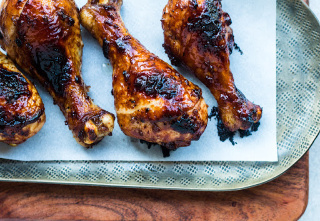 This sticky and slightly sweet balsamic sauce is one of the simplest recipes you’ll find. Four ingredients. Five minutes’ total effort. It doesn’t get much easier than that—especially for meat this finger-licking delicious. Bonus: It’s Primal+keto—and family-friendly. Serve it up at your next family dinner or hosted gathering.
This sticky and slightly sweet balsamic sauce is one of the simplest recipes you’ll find. Four ingredients. Five minutes’ total effort. It doesn’t get much easier than that—especially for meat this finger-licking delicious. Bonus: It’s Primal+keto—and family-friendly. Serve it up at your next family dinner or hosted gathering.
Note: We love this sauce on drumsticks, but it’s also perfect for bone-in, skin-on chicken thighs. Serve with your favorite salad or vegetable.
Servings: 3
Prep Time: 5 minutes
Cook Time: 50 minutes
Ingredients:

1.5 lbs. chicken drumsticks (or 5 large drumsticks)
1/2 cup Primal Kitchen® Balsamic Dressing & Marinade
2 garlic cloves, grated
3 Tbsp. coconut aminos
Instructions:

Preheat your oven to 400 ºFahrenheit. Combine the marinade ingredients together. Pour 1/3 of the marinade into a bowl and toss drumsticks in the marinade. Lay the drumsticks on a parchment-covered sheet pan and brush with any residual marinade from the bowl. Bake for 15-20 minutes.
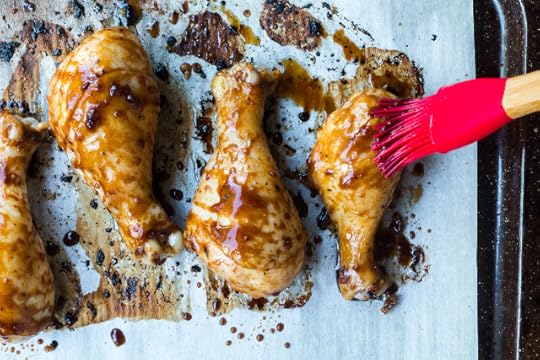
Bake the drumsticks for 20 minutes. During this time, simmer the remaining marinade over medium-low heat until the sauce begins to bubble. Stir frequently until the sauce has thickened to the consistency of runny honey and set aside. After 20 minutes in the oven, remove the drumsticks and brush half of the thickened marinade on top of them. Bake for another 10 minutes. Brush remaining marinade on top and place the drumsticks back in the oven until they reach an internal temperature of 165-170 degrees. Allow to rest for 5 minutes before eating.
Nutrition Information (per drumstick):
Calories: 307
Total Carbs: 5 grams
Net Carbs: 5 grams
Fat: 21 grams
Protein: 26 grams
The post Balsamic Drumsticks appeared first on Mark's Daily Apple.



August 30, 2019
Weekly Link Love — Episode 44

Research of the Week
In mice, a high-fat maternal diet protects against Alzheimer’s in the offspring.
Neanderthals ranged into western Iran.
Among Chinese seniors living in an elderly community, higher LDL predicts lower rates of dementia.
Heated canola oil worsens gut inflammation.
Dairy still has no relation to mortality.
New Primal Blueprint Podcasts

Episode 368: Bela Gandhi: Host Elle Russ chats with dating expert Bela Gandhi.

Episode 369: Q&A with Brad: Host Brad Kearns answers questions about gaining weight on keto, a military success story, and more.

Primal Health Coach Radio, Episode 24: Andrew Sillitoe comes on the podcast to discuss practicing what you preach, structuring effective client offers, and the importance of taking action.
Each week, select Mark’s Daily Apple blog posts are prepared as Primal Blueprint Podcasts. Need to catch up on reading, but don’t have the time? Prefer to listen to articles while on the go? Check out the new blog post podcasts below, and subscribe to the Primal Blueprint Podcast here so you never miss an episode.
Media, Schmedia
Because it has a few grams of saturated fat, olive oil misses out on a “healthy” rating in Australia.
Extreme athletes tend to have bad teeth.
Interesting Blog Posts
Peter wonders if “loss of the gene for lipoprotein lipase, or similar loss, might not have been a big deal when humans lived by eating elephants. Or even until corn oil took off as a cholesterol lowering scam.”
Social Notes
I agree with some of these “healthiest pantry staples” on Amazon.
Interesting thread on atherosclerosis.
Everything Else
Turkish beekeeper makes lemonade.
Dutch consumers form a “people’s farm.” Good idea.
Things I’m Up to and Interested In
Study result that people need to hear: Protein intake has no effect on kidney function in healthy adults.
Concept I found interesting: Human emotions as personal narratives. And how aging affects the narratives we create for ourselves.
I can see it now: Statins for crows.
ATM I’d use: Salmon ATM.
This was a cool podcast: The ultimate lipid podcast with Dave Feldman and Siobhan Huggins.
Question I’m Asking
Have you noticed a shift in the way people in everyday life approach health, fitness, diet, and lifestyle?
Recipe Corner
This doesn’t get a link because it’s incredibly simple: frozen watermelon slices. If you want to get crazy, dip them in a mix of salt, cayenne, and lime juice.
Carnivore pizza.
Time Capsule
One year ago (Aug 25– Aug 31)
What Can Heat Do For Your Health? – Well, what can it?
Are Your Children Sleep-Deprived?– Quite possibly.
Comment of the Week
“Good work Mark – Why is TMAO linked to kidney and heart disease?
The TMAO that is soi linked is being made from trimethyl-lysine, TML.
TML is formed in the body when cells are trying to make carnitine,
If this doesn’t happen, the TML can be converted to TMAO.
TML seems to be a better predictor of heart disease as TMAO.
It looks to me that TMAO can be a sign of diseases that lead to carnitine insufficiency, rather than the other way round
https://academic.oup.com/eurheartj/article-abstract/40/32/2700/5477386?redirectedFrom=fulltext”
– Great work, George. You always find interesting connections.

The post Weekly Link Love — Episode 44 appeared first on Mark's Daily Apple.



August 29, 2019
22 Keto Air Fryer Recipes
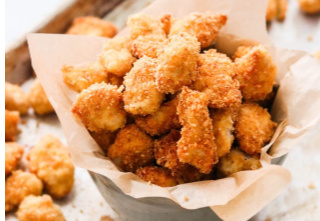 A special thanks to Courtney Hamilton at Paleohacks.com for today’s keto recipe roundup.
A special thanks to Courtney Hamilton at Paleohacks.com for today’s keto recipe roundup.
Cook up keto-friendly meat, veggies, chips, and fries in a snap with the air fryer!
The air fryer works similar to a convection oven, and it’s becoming every bit as ubiquitous as the crock pot. It’s a must-have kitchen appliance for when you want to save time while making healthier meals—which you’ll definitely want when you’re on the keto diet.
One of the best parts of using an air fryer is the ability to make deliciously crispy recipes like onion rings or fish sticks—but without any grease.
If you’re new to keto or the air fryer (or both), these 22 recipes for appetizers, sides, healthy snacks, and mains are a great way to get started! Serve it alongside a slice of keto bread, and you’ve got yourself a great fat-burning meal!
1. Air Fryer Keto Onion Rings
These perfectly crispy fried onion rings taste like they came from your favorite restaurant, but without the gluten and grease. Serve it with Paleo mayo for a winning app.
Air Fryer Keto Onion Rings | Wholesome Yum

2. Crispy Air Fryer Fish Sticks
Whether you’re cooking for kids or yourself, these golden crispy fish sticks will satisfy every time.
Crispy Air Fryer Fish Sticks | All Day I Dream About Food
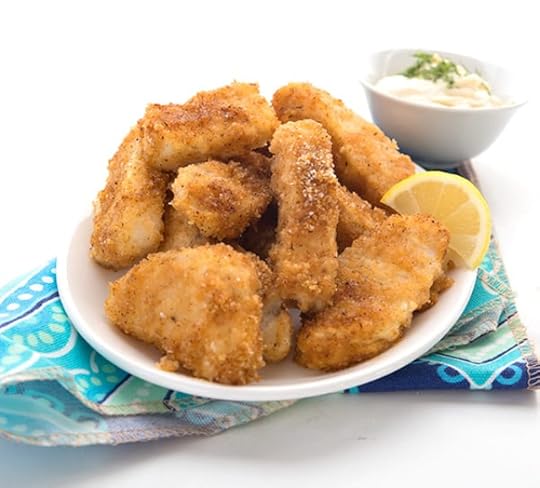
3. Keto Air Fryer Meatloaf Sliders
Jazz up Grandma’s meatloaf recipe by making them into sliders. Comfort food meets convenience in this main dish meal that will become a regular in your weekly rotation.
Keto Air Fryer Meatloaf Sliders | A Girl Worth Saving
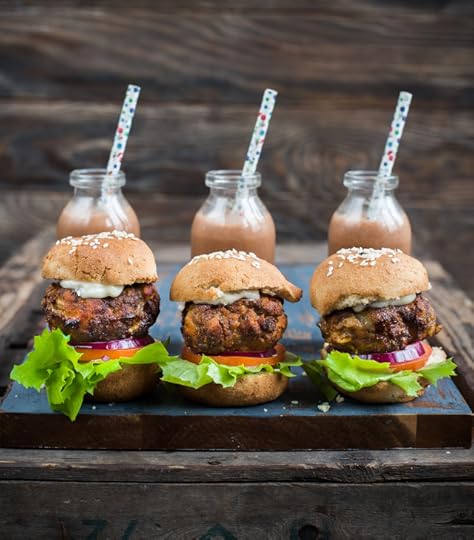
4. Air Fryer Green Beans with Bacon
Bacon adds a delectable salty and savory flavor to the green beans. It’ll convert even the harshest vegetable hater!
Air Fryer Green Beans with Bacon | Two Sleevers

5. Air Fryer Keto Low-Carb Fried Chicken
Low-carb and grain-free fried chicken? Yes, it’s possible! Serve it with your favorite keto side dish and you’re good to go.
Air Fryer Keto Low-Carb Fried Chicken | Wholesome Yum

6. Air Fryer Salmon Patties
“Fry” up these golden patties and serve them with your favorite veggie chips and avocado for a yummy keto lunch.
Air Fryer Salmon Patties | Berry & Maple

7. Air Fryer Keto Popcorn Chicken
Kids and adults alike will love snacking on these grain-free, crispy bites.
Air Fryer Keto Popcorn Chicken | What Great Grandma Ate

8. Easy Baked Zucchini Chips
Kale chips get lots of attention, but you won’t look back when you try these crispy keto zucchini chips.
Easy Baked Zucchini Chips | Sweet C’s

9. Air Fryer Chicken Breast
You don’t have to worry about dried-out chicken here. This crispy, juicy bird rivals even the Instant Pot® cook quality.
Air Fryer Chicken Breast | Love Food Not Cooking

10. Air Fryer Brussels Sprouts
You don’t need any cooking skills to get these Brussels sprouts perfectly crisp. They’re a great veggie for when you’re craving a hearty dose of nutrients.
Air Fryer Brussels Sprouts | Sustainable Cooks

11. Easy Air Fryer Roasted Broccoli
Speaking of perfectly cooked veggies, this air fryer broccoli is a delicious way to up your veggie intake on a keto diet. You’ll like them even if you aren’t watching your carbs!
Easy Air Fryer Roasted Broccoli | Stay Snatched
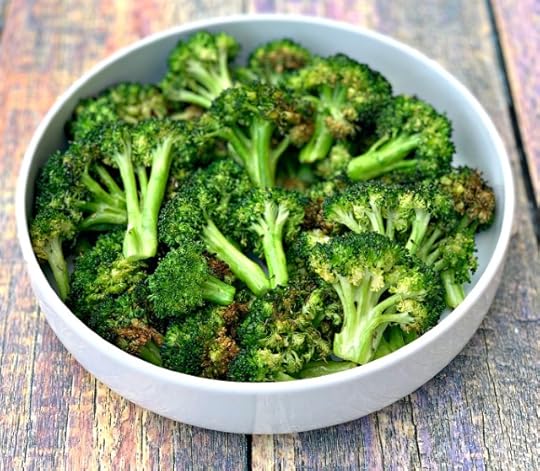
12. Crispy Avocado Fries
There’s more to the avocado than guacamole, as proven by these tasty avocado fries. Serve as an appetizer, a snack, or a side dish!
Crispy Avocado Fries | Broke Foodies
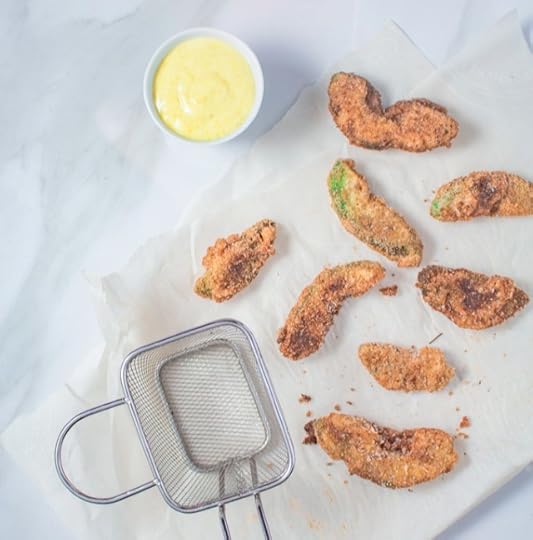
13. Keto Air Fryer Shrimp Scampi
You don’t have to hit up a seafood restaurant to get perfectly cooked shrimp scampi. These golden brown shrimp pair nicely with keto onion rings or avocado fries!
Keto Air Fryer Shrimp Scampi | Two Sleevers

14. Air Fryer Bacon Wrapped Asparagus
The classic Paleo and keto dish gets an air fryer makeover. You can prep them in just five minutes, and they’re on the table in less than 30 minutes.
Air Fryer Bacon Wrapped Asparagus | Monday Is Meatloaf

15. Easy Keto Low-Carb Vegetarian Air Fryer Cauliflower Buffalo Wings
You won’t have trouble boosting your veggie intake with these spicy cauliflower Buffalo bites.
Easy Keto Low-Carb Vegetarian Air Fryer Cauliflower Buffalo Wings | Stay Snatched

16. Air Fryer Steak Bites and Mushrooms
Bust out the air fryer for your next steak night! This recipe cooks juicy mushrooms together with steak bites for an easy meal you’ll come back to time and again.
Air Fryer Steak Bites and Mushrooms | Best Recipe Box

17. Air Fryer Chicken Wings
Whether you want to serve them as a snack, appetizer, or main dish, these chicken wings are crispy, juicy, and finger-licking good.
Air Fryer Chicken Wings | Keto Adapted
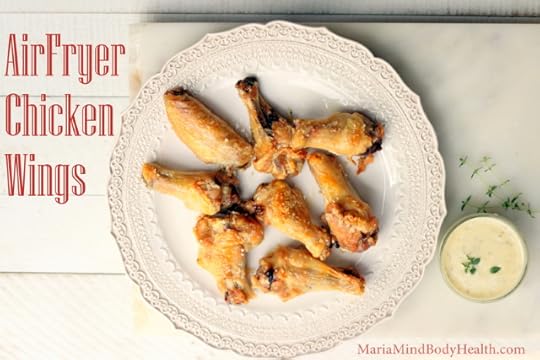
18. Air Fryer Garlic Lime Shrimp Kebabs
You don’t need a grill to make kebabs! Coat shrimp with fresh lime for a zesty, savory dish that will definitely wow dinner guests.
Air Fryer Garlic Lime Shrimp Kebabs | Berry & Maple
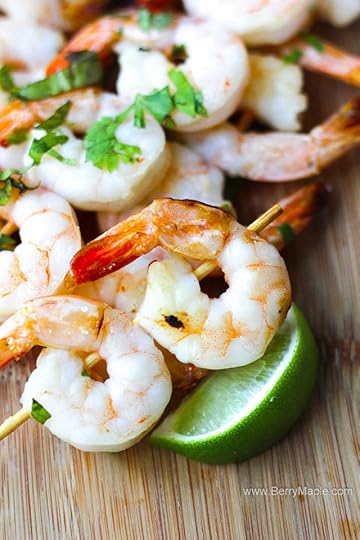
19. Air Fryer Salmon and Asparagus
Yes, you can make a lighter meal in the air fryer! You’ll save time and dishes when you whip up this easy keto meal that preps and cooks in under 15 minutes.
Air Fryer Salmon and Asparagus | Eat the Gains

20. Air Fryer Kale Chips
Cook a big batch of these keto kale chips and munch on them all week!
Air Fryer Kale Chips | Berry & Maple

21. The Best Air Fryer Whole Chicken
Better than rotisserie and easier than the oven, this whole chicken is great for special occasions. Try small turkeys, too!
The Best Air Fryer Whole Chicken | Recipe Diaries

22. Air Fryer Roasted Asparagus
Season your asparagus however you like, then cook it to perfection in the air fryer.
Air Fryer Roasted Asparagus | Berry & Maple
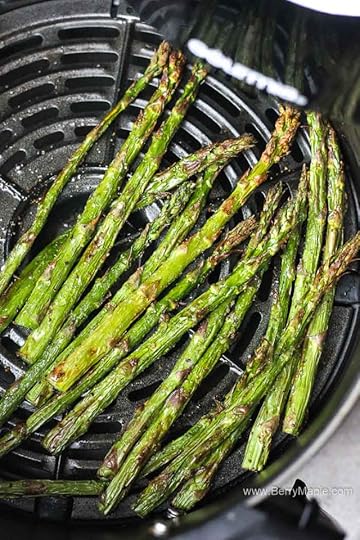
Thanks again to Courtney Hamilton from Paleohacks.com. Interested in seeing a certain recipe or roundup of a certain category—Primal or Primal-keto? Let us know below!

The post 22 Keto Air Fryer Recipes appeared first on Mark's Daily Apple.



August 28, 2019
What’s TMAO, and What Does It Have to Do With My Health?
 With the last few weeks’ definitive guide and follow-up on fish, a reader asked me about trimethylamine N-oxide, or TMAO. What is it?
With the last few weeks’ definitive guide and follow-up on fish, a reader asked me about trimethylamine N-oxide, or TMAO. What is it?
TMAO is the latest justification given for why eating meat just has to be bad for you. Saturated fat didn’t take. Animal protein didn’t work. Iron was a dud. IGF-1 hasn’t panned out. Methionine isn’t enough. So now they’re using TMAO to convince you not to eat that steak.
How’s it supposed to work?
How TMAO Happens
When certain gut bacteria encounter choline (found in eggs and liver) or carnitine (found in meat, especially red meat), some of it is converted to trimethylamine, or TMA. TMA is the compound that gives fish its “fishy odor.” Fish is actually extremely high in TMA, which I’ll discuss later on. Then, the liver converts a portion of the TMA to TMAO. Studies have shown that elevated serum levels of TMAO are linked to heart disease, type 2 diabetes, kidney disease, and even all-cause mortality. There’s definitely some heterogeneity among the studies, but enough have found a strong connection between TMAO and all manner of poor health conditions that researchers have focused on this compound.
Okay, so anything that contains choline or carnitine will increase TMAO, which should in theory increase your risk of heart disease. Right? Let’s go down the list.
Dietary TMAO Precursors and Their Effects On Health
Eggs. The best source of TMAO-precursor choline in our diet—eggs—should absolutely skyrocket TMAO levels. Except it doesn’t happen.
Three eggs a day has no effect on TMAO levels, even as it increases choline levels and HDL cholesterol.
Okay, so maybe the choline slipped past the TMA-producing gut bacteria in that study, but what about if you quickly switch people from eating oatmeal for breakfast to eating eggs. Surely bad things will happen, right?
No. Eating eggs instead of oatmeal has no effect on TMAO levels. It increases carotenoid and choline levels, though.
Liver. Okay, liver has to do the trick. It has high levels of both carnitine and choline. But no: feeding liver (among other foods) to men fails to increase TMAO levels above control.
Carnitine. Forget meat. What if you go straight to the offensive precursor itself and give actual human women a big daily dose of carnitine for, I don’t know, 24 weeks? Surely it will do something bad.
Nope. TMAO skyrockets, an indication that these ladies’ gut bacteria are converting carnitine to TMA and TMAO, but serum C-reactive protein, interleukin-6, L-selectin, P-selectin, vascular cell adhesion molecule-1, intercellular adhesion molecule-1 and lipid profile markers are completely unaffected. If gut bacterial conversion of carnitine to TMAO is the preeminent risk factor for heart disease, you’d think some of these ladies’ cardiovascular risk factors would have responded. They had half a year to respond. They did not.
Okay, but maybe there’s lag time between TMAO increases and deleterious changes to health. Nope. They followed those same ladies after cessation of carnitine supplementation. Their TMAO levels dropped, but their health markers stayed the same. No change.
And here’s a study where they used carnitine to increase TMAO levels in patients on dialysis. Not only did nothing bad happen, but the carnitine even reduced markers of vascular injuries. Higher TMAO, better health.
Seafood. As I mentioned earlier, fish and shellfish come pre-contaminated with the TMAO precursor TMA. It’s what gives the characteristic fishy odor, and it definitely gets converted to TMAO. In fact, a human study from a few years ago found that feeding people fish spiked TMAO levels by 60 times. A more recent study even concluded that elevated TMAO levels are a reliable marker for cod intake. The more fish you eat, the more TMAO your body will process.
If you’re going to claim that TMAO is dangerous and causes heart disease, you’ll have to make the case that fish is dangerous and causes heart disease. All the evidence we have points in the opposite direction—that fish and shellfish are protective against heart disease.
So, Why Is TMAO Linked To Poor Health Then?
How do we explain the connection between increased TMAO and poor heart health?
Here it is linked to atrial fibrillation.
Here it is linked to stroke.
Here it is predicting heart events.
The connection is there. And in animal models, TMAO even appears to mechanistically increase atherosclerosis. The mice they dosed with TMAO to increase atherosclerosis were genetically engineered to be ApoE knockouts, a strain of lab mouse that gets heart disease from almost everything, but still.
The connection isn’t causal. It’s an observation. There are no controlled studies giving people foods (or even supplements) that raise TMAO and increase disease or death. There aren’t even prospective observational studies where they track a group’s food intake, TMAO levels, and death/disease over time.
You know what I think (and have always thought)?
High TMAO can be a marker for metabolic disease. It could indicate inhibited kidney function, as the kidneys are response for disposing of excess TMAO. It could indicate poor health in general.
The latest evidence is confirming what I’ve long suspected: the reason high TMAO levels are linked to cardiovascular disease and overall mortality is that both type 2 diabetes and chronic kidney disease cause elevated TMAO levels. The causality is reversed.
What’s one of the kidney’s primary jobs? Excreting waste materials and toxins. What’s going to happen if the kidney begins to fail or lose its functioning? The stuff that used to be excreted starts backing up. TMAO is supposed to be excreted in the urine via the kidneys. If the kidneys aren’t working, TMAO levels skyrocket.
But even then, high TMAO isn’t even necessarily a bad thing. Check out that study I linked to earlier where women were given carnitine every day. Their TMAO levels skyrocketed but nothing bad happened. No health markers worsened. In one study, they even improved.
The Takeaways…
That’s the thing with biology. There are dozens of reasons TMAO could be elevated, some of them bad, some of them harmless, some of them good.
There simply exists no credible evidence that increased TMAO because you’re eating fish, or eggs, or liver, or meat, does anything untoward to your health. I’m not ruling it out. But the evidence just isn’t there. There’s far more evidence that eating fish, eggs, liver, and meat improve your health.
That’s it for today, folks. If you have any further questions about TMAO, leave them down below. Until then, enjoy your choline and carnitine!
Thanks for reading.

References:
Schiattarella GG, Sannino A, Toscano E, et al. Gut microbe-generated metabolite trimethylamine-N-oxide as cardiovascular risk biomarker: a systematic review and dose-response meta-analysis. Eur Heart J. 2017;38(39):2948-2956.
Dimarco DM, Missimer A, Murillo AG, et al. Intake of up to 3 Eggs/Day Increases HDL Cholesterol and Plasma Choline While Plasma Trimethylamine-N-oxide is Unchanged in a Healthy Population. Lipids. 2017;52(3):255-263.
Missimer A, Fernandez ML, Dimarco DM, et al. Compared to an Oatmeal Breakfast, Two Eggs/Day Increased Plasma Carotenoids and Choline without Increasing Trimethyl Amine N-Oxide Concentrations. J Am Coll Nutr. 2018;37(2):140-148.
Zhang AQ, Mitchell SC, Smith RL. Dietary precursors of trimethylamine in man: a pilot study. Food Chem Toxicol. 1999;37(5):515-20.
Samulak JJ, Sawicka AK, Hartmane D, et al. L-Carnitine Supplementation Increases Trimethylamine-N-Oxide but not Markers of Atherosclerosis in Healthy Aged Women. Ann Nutr Metab. 2019;74(1):11-17.
Samulak JJ, Sawicka AK, Samborowska E, Olek RA. Plasma Trimethylamine-N-oxide following Cessation of L-carnitine Supplementation in Healthy Aged Women. Nutrients. 2019;11(6)
Fukami K, Yamagishi S, Sakai K, et al. Oral L-carnitine supplementation increases trimethylamine-N-oxide but reduces markers of vascular injury in hemodialysis patients. J Cardiovasc Pharmacol. 2015;65(3):289-95.
Svingen GFT, Zuo H, Ueland PM, et al. Increased plasma trimethylamine-N-oxide is associated with incident atrial fibrillation. Int J Cardiol. 2018;267:100-106.
Liang Z, Dong Z, Guo M, et al. Trimethylamine N-oxide as a risk marker for ischemic stroke in patients with atrial fibrillation. J Biochem Mol Toxicol. 2019;33(2):e22246.
Haghikia A, Li XS, Liman TG, et al. Gut Microbiota-Dependent Trimethylamine N-Oxide Predicts Risk of Cardiovascular Events in Patients With Stroke and Is Related to Proinflammatory Monocytes. Arterioscler Thromb Vasc Biol. 2018;38(9):2225-2235.
Jia J, Dou P, Gao M, et al. Assessment of Causal Direction Between Gut Microbiota-Dependent Metabolites and Cardiometabolic Health: A Bidirectional Mendelian Randomization Analysis. Diabetes. 2019;68(9):1747-1755.
The post What’s TMAO, and What Does It Have to Do With My Health? appeared first on Mark's Daily Apple.



August 27, 2019
Dear Mark: Is Fish Enough, Do Carnivores Really Need It, and More
 For today’s edition of Dear Mark, I’m answering several questions you guys asked in response to the fish post from last week. First, is being a pescatarian enough? Can you get what you need from seafood without eating meat, dairy, or eggs? Next, how important is fish for a carnivore? Third, how’s that Whole Foods farmed salmon? Healthy or not? Then I write a bit about canned cod liver, the underrated seafood, followed by a short blurb about whether we should worry about wild salmon sustainability as well as a question about taking chlorella to reduce heavy metal absorption from fish.
For today’s edition of Dear Mark, I’m answering several questions you guys asked in response to the fish post from last week. First, is being a pescatarian enough? Can you get what you need from seafood without eating meat, dairy, or eggs? Next, how important is fish for a carnivore? Third, how’s that Whole Foods farmed salmon? Healthy or not? Then I write a bit about canned cod liver, the underrated seafood, followed by a short blurb about whether we should worry about wild salmon sustainability as well as a question about taking chlorella to reduce heavy metal absorption from fish.
Let’s go:
Adore this Mark! Thank you!
As a basically pescatarian this has been a wonderful insight. I find it too difficult or just a bit heavy digesting meat often, but I live for seafood!
Quick follow up question- anything I could be missing not eating meat, dairy or eggs and just seafood? If so how best can I combat those issues?
I’m struggling to come up with any major deficiencies you’ll incur eating only seafood for your animal products.
However, simply eating fish probably isn’t good enough. You need to also eat shellfish, particularly the bivalves oysters and mussels.
Most people get their zinc—important for hormone optimization and thus everything—from red meat, but the best source in the entire world is the humble oyster. Just one oyster gives you nearly 100% of your daily zinc, selenium, and copper. But don’t just eat one. Eat multiple oysters often.
An affordable way to obtain oysters is to buy canned or buy the pre-shucked ones. If you get the shucked oysters, make sure they’re fresh as can be. Pick jars with “use by” dates as far off in the future as you can. Sauté these in butter or avocado oil until a crust develops on both sides, or just simmer them in some hot bone broth.
I’d also recommend getting some salmon roe, aka ikura. They usually come salt cured, little globules of DHA, vitamin D, and astaxanthin-rich phospholipids that pop in your mouth. They are far more potent a source of nutrients than salmon flesh (which is already one of the best). You can get them at Japanese markets and sushi restaurants, or order them online in bulk.
I’d eat a variety of fish. If you had to just pick one, wild salmon would be great, but you’ll be better served eating many kinds. Halibut gives great magnesium. Salmon gives great selenium, vitamin D, and omega-3s. Cod is a nice way to pack in the protein. Smaller fish provide calcium, omega-3s, and iron.
Oh, and throw in some shrimp or crabs if only for the cholesterol. I’m of the opinion that dietary cholesterol can be very helpful.
Is it okay for carnivores to skip fish?
No, it’s not. I’ll get flack for this, which I actually welcome, because the truth simply is that carnivores should be eating seafood.
For one, fish is meat. Fish are animals. Carnivores eat animals. Carnivores should eat fish.
For two, every human group who’s ever lived on the coast or within sniffing distance of it has eaten fish, shellfish, and other seafood. Hell, one of the traditional peoples that carnivores like to cite as justification for their diet are the Inuit, who ate an enormous amount of seafood—at least the coastal-living ones.
Three—and this is the most important—fish and other seafood offer nutrients that are often missing from land-based animals. Traditional soil-based foods are less nutrient dense than ever before. Feed for most livestock is more subpar than ever.
Seawater also has a different nutrient profile than soil. Sea animals are rich in iodine, copper, selenium, and manganese. I’m not saying you can’t get selenium, iodine, copper, and manganese from land foods, but it’s much harder and less reliable than eating seafood. And manganese in particular is very hard to get from land-based animals. If you’re not eating sweet potatoes or wheat germ or brown rice, you should eat some mussels—the richest source of manganese on the planet.
Also, opinion on Whole Foods farmed salmon? They convinced me it’s good, and it sure is delicious, but I’m still skeptical.
Whole Foods farmed Atlantic salmon is better than most farmed salmons.
They teamed up with a company that makes a specialized salmon feed containing fish trimmings and microalgae, which increases the omega-3 content of the salmon who eat it. They monitor and remove the PCBs (a common sea-borne toxin) from the feed before the salmon get it.
They use no antibiotics, hormones, or artificial colorants. So, while the farmed salmon at Whole Foods isn’t as brilliantly red as wild salmon, the light pink color it has comes from actual feed, not artificial dyes.
Often overlooked is canned cod liver in its own juices. It delicious and nutritious by itself. And you eat eggs, you can mash it with a few boiled eggs. Also, stay clear of seafoods that comes from the Far East.
Yes, canned cod livers are quite mild and tasty. They’re canned in their own cod liver oil and make a great source of vitamin D, vitamin A, and long chain omega-3s.
Find them in European markets or online.
If you’re not getting enough vitamin D or retinol (animal form of vitamin A, far more bioavailable) from your diet and lifestyle, cod liver oil can help. A big spoonful of cod liver oil used to be standard protocol for kids growing up for good reason—it’s great for immune function.
I believe we can leave the salmon a bit out (besides worries about contamination) – what about the other animals in the planet besides the humans that also deserve to consume these species?
Salmon is the oldest word in the Indo-European family of languages. Humans have been eating them for tens of thousands of years. They’re that important to us.
The more well-caught wild salmon we all fork out our money to buy, the more sustainable the salmon industry gets. Money talks. You won’t save the salmon by not eating them. That’s not how this works. Even the Monterey Bay Seafood Watch, the global leader in analysis of sustainable seafood, calls wild-caught salmon a “best” choice.
Mark,
Great article. I usually take some chlorella when I eat high mercury fish. Will that provide adequate protection fro the heavy metals?
Chlorella can definitely remove heavy metals from humans. In one study, 90 days of chlorella supplementation lowered mercury levels in people with dental implants. In rats given cadmium, taking chlorella increases urinary excretion of cadmium and decreases its absorption.
That’s promising. However, I’m not sure if taking a single dose of chlorella as needed will inhibit acute absorption of mercury. It might need to be an ongoing process.
Thanks for stopping in today, everybody. Have a question for me on these or other Primal related topics? Let me know down below.

The post Dear Mark: Is Fish Enough, Do Carnivores Really Need It, and More appeared first on Mark's Daily Apple.



August 26, 2019
Retired, Reborn and Pursuing My Passion
It’s Monday, everyone! And that means another Primal Blueprint Real Life Story from a Mark’s Daily Apple reader. If you have your own success story and would like to share it with me and the Mark’s Daily Apple community please contact me here. I’ll continue to publish these each Monday as long as they keep coming in. Thank you for reading!

Yup, success stories are back! And I’m looking for more. Follow-ups, mid-progress reflections—every story at every stage has the potential to inspire folks out there who are getting started or contemplating a new beginning. Contact me here. Enjoy, everybody!
This week’s return to success stories features a contemporary of mine. (Yup, those of us in our 60s want to show what’s possible.) I hope you enjoy this follow-up story from reader Bob Connor. You’ll find his original success story reprinted below along with an inspiring update on where he is (and what he’s up to) now.
ORIGINAL STORY:
Dear Mark,
I am an Athletic Director at an international school in Santiago, Chile; having arrived here this past July, from another school in Bangkok, Thailand. I am 57 years old (like you!), and I have been endeavoring to follow a Primal lifestyle for just over two years now. I had previously tried being a vegetarian, and then added some fish, but I did not feel much different or better. So, I started eating Primally and after the first few weeks (a tough adjustment with deleting all the grains and starchy carbs I had been eating), I began to notice some changes. I no longer would get any bloated/gassy discomfort, and I always felt “lean.” Additionally, my energy level increased and I honestly now feel like I have more energy these days than I did 5-10 years ago!
I have recently started the Primal Fitness routines and exercise suggestions, and the overall flexibility of the program has helped greatly—it is easy to adapt and modify depending on your schedule, and your overall motivation levels. Plus, I feel that I have gained a great deal of “functional fitness,” which is crucial. I also continue to use my TRX suspension trainer, and usually try to work out in my Vibram FiveFingers, along with doing various other bodyweight/core training workouts. Overall, I am feeling great as I enter my 7th decade on this planet!
My real story though, is more about helping others, which you have made your “mission,” Mark. When I started living Primally and feeling/looking better, people started noticing, and would ask me questions. I then began to spread the many benefits of this awesome lifestyle. In the past two years, I have purchased around 15 copies of THE PRIMAL BLUEPRINT, and given the book as a gift to friends whom I felt were truly interested, and would “give it a try.” I have also bought some Grok On t-shirts for some good friends who have “gone primal,” and I continue to regularly purchase some of your supplements, and recently some new Primal Fuel and the Primal Leap Kit. Reading your website daily and feeling the great effects of being Primal has really made me want to share as much info as possible with friends and colleagues. When I receive positive feedback from people, it is a great feeling—one which you experience every day, Mark!

For me—this is one of my favorites from a good friend still teaching in Thailand, as he had just returned from a summer trip to the U.S.—
Just wanted to say thanks again for changing my life. Had a great summer. Bought the FiveFinger KSOs, and working out is even more fun than before! Big difference.
Being in the states was challenging for me in terms of eating Primal. Stayed with my mom and dad, and they eat like typical Americans. Been back in Bangkok for a month now and have regained all the strength, explosiveness, and stamina that I lost in the US. Amazing how one month of eating junk can change the body’s performance.
I now feel and look great again. I have lots of energy and feel totally rejuvenated in life. I owe you so much.
Take care,
Andrew
I have several other affirmations from friends and even some high school students also, but I have gone on long enough already. I often get funny looks and comments when people see my FiveFingers shoes on my feet, and many others wonder why I refuse to eat the typical “conventional-Western” diet. I try to explain the many reasons, all based on research and evidence (thank you again!), but most just shrug me off and think I am nuts—including some of my own family members. Yet, this only encourages me, as I am definitely committed to staying on this Primal journey, and I will continue to spread your message to whomever I think will listen. I am convinced that this is the ONLY way to go, and I now think that my next job will be in the health-fitness profession. I agree with my friend Andrew—I owe you so much, Mark!
Thanks for listening, and as always – GROK ON!
UPDATE:
I started my personal primal journey back in 2009 with my first success story featured on Mark’s Daily Apple in 2010.
Five years later, I became one of the original “Legacy” Primal Blueprint Certified Experts completing the first iteration of the Primal Health Coach Institute course—recently passing the recertification exam and studying all of the extensive information in the amazing Business Resource Center. It feels great to stay up-to-date on the latest Primal Health Coach education!
After a long career as an educator in numerous international schools, I retired from my last full-time position at the International School Bangkok in Thailand in June 2018. Following my retirement from education, I started my new small business venture as a Primal Health Coach here in Bangkok with a good number of clients ready to sign up for my services. I have been a coach for most of my 35+ years in education, almost entirely with student-athletes on various sports teams, so moving into Primal Health Coaching has been a smooth transition.
For the previous few years, I had been teaching free large group fitness classes for the teachers and staff at the school. Attendance was always quite good, with anywhere from 15-30+ people showing up each week for my Fitness Fun sessions. I am now paid by the school to lead two classes a week (people still attend free of charge), now known Primal Power Fitness Fun sessions.
Additionally, a number of teachers, parents, staff and downtown Bangkok residents have become Primal Power clients. I work with 25-30 people on a weekly basis as their health coach and/or fitness trainer.
This new venture has been incredibly gratifying with wonderful client results. It feels so great to be pursuing my true passion in life—passing on my knowledge and expertise of all things PRIMAL!!
Besides coaching and teaching, I have been partnering with a paleo-friendly grocery company in Bangkok, offering seminars, workshops and presentations on various health and wellness topics to a variety of audiences in the city. My presentations always include a number of concepts from the Primal Blueprint lifestyle, which inevitably bring up both typical questions and surprising comments from conventional wisdom viewpoints.
For all of this, I am incredibly grateful to Mark Sisson himself (I believe we are both the same age), and to the entire Primal Health Coach Institute community: program administrators, graduates and current students. I continue to learn so much on a daily basis from the facebook posts, webinars and PHCI blog posts. And of course, from the Mark’s Daily Apple posts where it all started!
At 66 years young, I can honestly say that I have more consistent energy on a daily basis, and I believe that I am physically stronger than I was 20 years ago! Following a primal lifestyle has been incredibly effective, and I genuinely believe that others will benefit similarly if they adopt the basic primal rules of living awesomely!
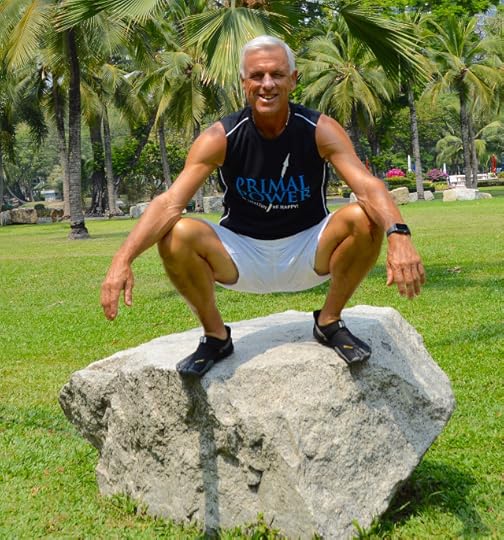
Read more about Bob’s journey and his passion for Primal living. Have YOU had success with Primal living and/or keto eating? Share your success story by emailing me here. Thanks, everybody, and have a great week.

The post Retired, Reborn and Pursuing My Passion appeared first on Mark's Daily Apple.



Mark Sisson's Blog
- Mark Sisson's profile
- 199 followers





